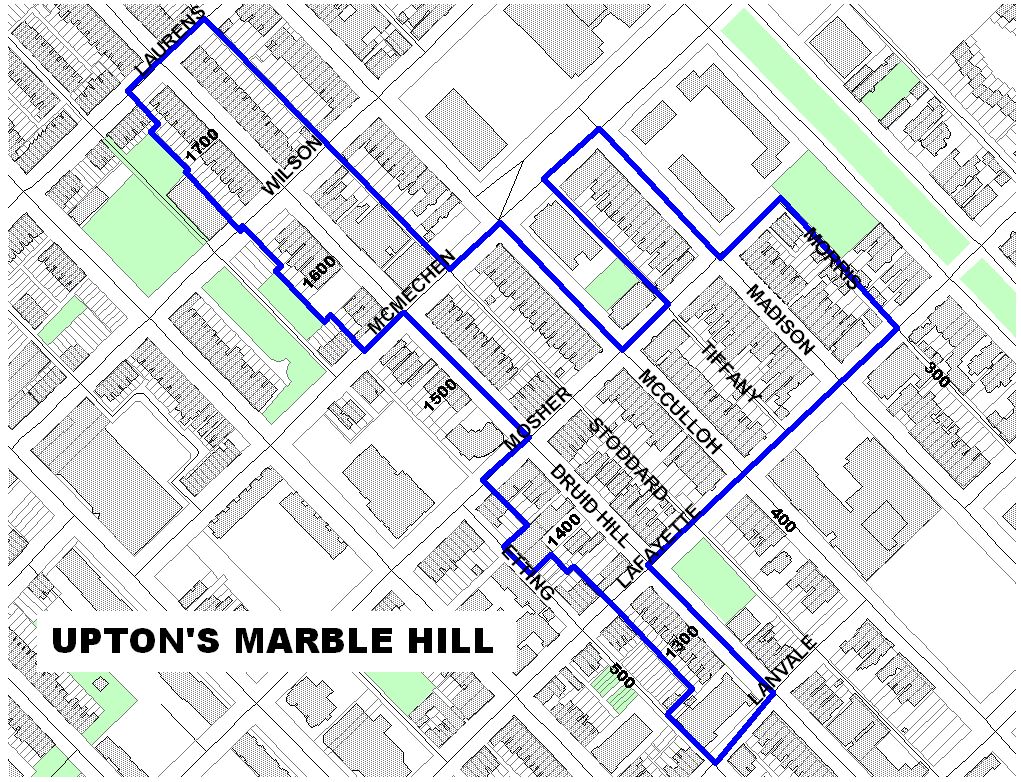Upton's Marble Hill
Description
 Upton's Marble Hill Historic District encompasses approximately 7 blocks and includes 184 properties. The houses were built in the early 1890's, later than most of the surrounding housing, since a land owner retained his property after much of the surrounding land was sold for development. The district is primarily residential, but also contains two historic churches, a YMCA, and a historic bank. The houses are traditional, marble-stepped brick rowhouses, exhibiting either Queen Anne or Italianate influence. Typical details are bowed fronts, original wood double doors, conical roof towers at corners, corbelled brickwork, roof cresting, and arched doorways. The integrity of the district remains high, as little alteration has taken place.
Upton's Marble Hill Historic District encompasses approximately 7 blocks and includes 184 properties. The houses were built in the early 1890's, later than most of the surrounding housing, since a land owner retained his property after much of the surrounding land was sold for development. The district is primarily residential, but also contains two historic churches, a YMCA, and a historic bank. The houses are traditional, marble-stepped brick rowhouses, exhibiting either Queen Anne or Italianate influence. Typical details are bowed fronts, original wood double doors, conical roof towers at corners, corbelled brickwork, roof cresting, and arched doorways. The integrity of the district remains high, as little alteration has taken place.
Significance
Upton's Marble Hill Historic District is important as one of Baltimore's earliest African-American middle class neighborhoods and for its well-preserved architectural detail. The lengthy list of historically prominent residents includes Harry S. Cummings, Sr., one of the first two blacks admitted to the University of Maryland Law School (1887), and the first black Baltimore City Councilman, T. Willis Lansey, who founded the Ideal Federal Savings and Loan (1920). Others were Henry Hall, a prominent engineer and educator, John Murphy, Sr., founder of the Afro-American newspaper, and Violet Hill White, Baltimore's first black female police officer. In 1900, the Federal Census showed the neighborhood to be entirely white (except for a few black servants) and probably of German-Jewish origins.
By 1910, a major racial change had taken place; the 1500 block of Druid Hill Avenue, for example, had only two white families in that year. This influx of black homeowners included teachers, postal employees, clerks, porters, coachmen, and domestic servants who were able to own or rent quality housing in the district. In 1985, the first section of the Upton district was designated, with approximately 51 rowhouses in a one-block area between McCulloh Street, Druid Hill Avenue, McMechan, and Mosher Streets. The expansion of the area in May 1990 raised the number of structures to 184 and the area of the district to about 7 blocks under the name Upton's Marble Hill, recognizing the local tradition of the neighborhood's immaculate white marble steps